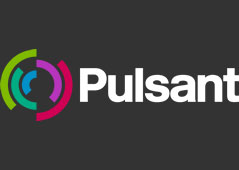As the last (do I hear applause?) installment in this five part series on the Taxonomy of IT, we have a bit of cleanup to do. There are two remaining “levels” of classification (Genus and Species), but there is also a need to summarize this whole extravaganza into some meaningful summary.
Genus classifications allow us to subdivide the Family of IT into subcultures based on their commonality to each other, while the Species definition enables us to highlight sometimes subtle differences, such as color, range or specific habits. Therefore, in order to round out our Taxonomy, Genus will refer to how IT is physically architected, while Species will expose what that architecture may hide.
The physical architecture of an IT environment used to fall into only a couple of categories. Most organizations built their platforms to address immediate needs, distributing systems based on the location of their primary users. An inventory database would be housed at the warehouse facility, while financials would sit on systems at corporate. This required the building and maintenance of complex links, both at the physical transport layer and also at the data level. Because of the limits of access technology, people traveled to where the “data” was kept.
Twenty years ago, we began the transition of moving the data to where the users can consume it. A new Genus evolved that enabled data to be moved to where it could be consumed. It’s vastly more efficient to ship a 5MB spreadsheet halfway across the country than it is to ship a 170lb accountant. In this architecture, the enablers were increases in available bandwidth, more efficient protocols, and better end-node processing power.
As we move forward in time, we are continuing to push the efficiency envelope. Now, we don’t even have to move that spreadsheet, we just have to move an image of that spreadsheet. And we don’t care where it needs to go, or even what route it takes to get there. We are all about lowest cost routing of information from storage to consumption and back.
So, Genus is a way for us to gauge how far down that arc of advancement our customers have traveled. Think in terms of a timeline of alignment with industry trends and capabilities.
Species, on the other hand, can be used to uncover the “gaps” between where in the timeline the customer is and what they have missed (intentionally or not) in terms of best practices. Did they advance their security in line with their technology? Have they established usage policies? Can their storage sustain the transition? What have they sacrificed to get where they are today, and what lies beneath the surface?
Using Genus and Species classifications, we can round out the taxonomy of any particular IT environment. The combination of factors from each of the seven layers completes a picture that will allow us to guide our customers through the turbulent waters of today’s IT world.
To recap the seven layers:
Kingdom: How IT is viewed by the business
Phylum: IT’s general operating philosophy
Class: How IT is managed on a daily basis
Order: How IT is consumed, and why
Family: The structure of data flow within IT systems
Genus: How IT is physically architected
Species: What that architecture may hide
It would be quite the undertaking to build out individual groupings in each of these categories. That is not what is important (although I did enjoy creating the pseudo-Latin neologisms in earlier parts of the series). What is key is that we consider all of these categories when creating an overall approach for our customers. It’s not all about the physical architecture, nor all about management. It’s about how the collection of characteristics that flow from the top level all the way down to the bottom converge into a single picture.
In my opinion, it is a fatal mistake to apply technology and solutions across any of these levels with impunity. Assuming that because a customer fits into a specific category they “have” to leverage a specific technology or solution is to blind yourself (and ultimately your customer) to what may be more appropriate to their specific situation.
Each environment is as unique as our own strands of DNA, and as such even those that make it to the Species with commonality will branch onto different future paths. Perhaps there should be an eighth level, one that trumps all above it. It could be called “Individuality.”
 Cloud computing is really coming into its own. After several years of predictions, we’ve finally seen adoption of some cloud technologies at the consumer level. Cloud storage, for example, has taken the marketplace by storm as companies like Dropbox get into the public cloud provider routine.
Cloud computing is really coming into its own. After several years of predictions, we’ve finally seen adoption of some cloud technologies at the consumer level. Cloud storage, for example, has taken the marketplace by storm as companies like Dropbox get into the public cloud provider routine. 25th April 2012
25th April 2012